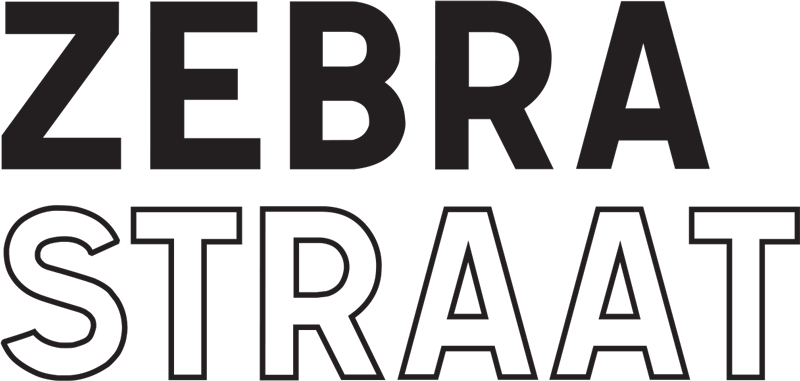WARSUBEC is the name of two, high-gloss yellow identical but mirrored frame structures appearing on the roofs of Zebrastraat. These monumental sculptures are each 12 m long by 6 meters wide and are more than 3 m high. The constructions are made in one piece and were transported by special convoy from Venlo, the Netherlands, under special supervision, inthe night of 28 and 29 of July, 2009. The official inauguration of WARSUBEC by Honorary Curator Jan Hoet took place on September 23, 2009. He described WARSUBEC as a very poetic work of art, that is perfectly integrated into the site.
What characterises the way of working of Ervinck, is that he never made a tangible model for WARSUBEC, but the work has been designed entirely on computer. In the process from the virtual to the real and from abstraction to figuration, the production of life-size work was immediately the next step. The art work was produced in close collaboration with a Dutch company specializing in commercial sculptures for theme parks. The skeleton is made of plywood and covered with polyurethane foam and polished by a machine, specially developed by Ervinck for this purpose. Then came three layers of polyester and one layer of fiberglass, which was polished by hand ? thus adding an element of craftmanship to the high-tech design. Twelve people worked for three months under the supervision of the artist, creating one of the largest works of art in Belgium.
As with many of Ervinck creations, it is difficult to give a concise description of WARSUBEC because there are so many connotations. WARSUBEC is a network or meshed structure, but it also looks somewhat like the former coral studies of the artist. Ervinck is fascinated by corals because of their complex, potentially infinite forms, which can only be reproduced by using a computer.
In contrast to most of the architectural works which are now created in that way, the shape of WARSUBEC was not generated by using a software. Instead, the framework, like the blobby voids, were hand crafted by Ervinck, who only used a computer program to make the round smooth edges. WARSUBEC is in every way a hybrid: sculpture and structure, blob and box, function and form, fiction and reality.
"My virtual sculptures constantly infect the real world and vice versa," Ervinck once said; ?Here it is a bright yellow parasite that infected the old building". Nick Ervinck has managed to create a bridge between contemporary design and the historic architecture of Zebrastraat.
About the artwork
About the artist
 Nick Ervinck °1981, Roeselare, Belgium
Nick Ervinck °1981, Roeselare, Belgium
Lives and works in Lichtervelde, Belgium - www.nickervinck.com
Education:
1999-2003: Hogeschool Gent, Department Academy: Multimedia and 3D Mixed Media Gent
Nick Ervinck, visual artist, is working on an endless and growing archive of shapes that establish an interesting interaction between virtual structures and handmade sculptures, between sculpture and architecture. The digital images continuously contaminate the three-dimensional shapes and vice versa. In his oeuvre Ervinck uses a variety of means of expression: digital prints, video, drawings and sculptural forms mainly from painted plaster, fiberglass and wood, which are presented in a meticulous manner within a given space. The digital prints offer a view into a virtual digital world, but also to a 'different reality'. This 'looking through' shows possibilities of his research in which sculptural elements are represented in the form of always new compositions and meanings. In his realistic rooms, racks and platforms, polymorphic, synthetic forms are coming to life as mutated molecules through an artistic computer program. Walls are suddenly no longer walls, and gravity does not exist. Ervinck plays with sculptural shapes and in a blink elevates monumental 'buildings' and blows them again full of life. A house turns into a sculpture and unfolds into nothingness. It is a vigorous game with images, materials and space and a balancing act between means and objective, between meticulous calculation and inspired improvisation. In 2008, Nick Ervinck won the prize of the public of the New Technological Art Award of the Liedts-Meesen Foundation, and was also winner of the Rodenbach Price.






